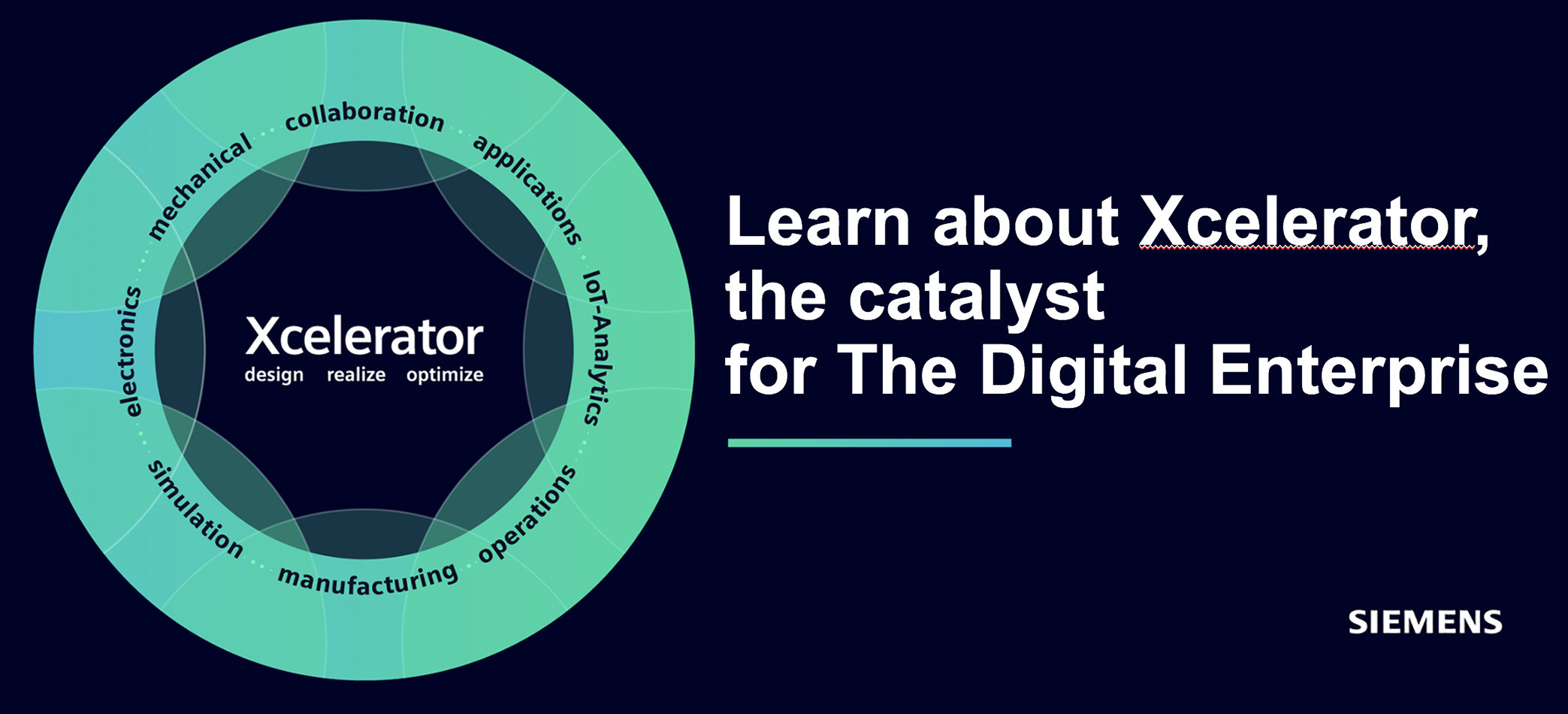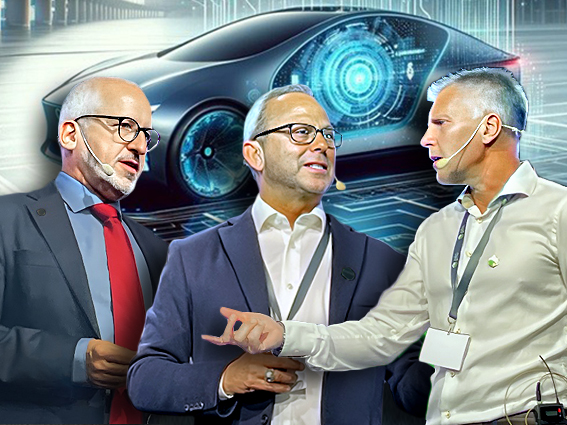What the future holds is not easy to say. The surest way to predict it seems to be to invent it, which either isn’t unproblematic. But there are quite a few interesting facts that can give us indications on where we’re heading. Chalmers professor Johan Stahre did so in a thought-provoking discussion during PTC’s CXO Summit event in Stockholm. Some answers were given to the opening questions in today’s article intro, “who will be your employees in 2030”, and even something about “who the customers are”, but exactly where the development lands is uncertain. One thing we can be sure of, however: “It will look very different in a short time compared to today, just few years ahead,” said Stahre, who in this previously has quoted Chalmers’ Greta Braun’s statement that, ”65% of all the jobs that today’s primary school children will do have not yet been invented.” It says something about the speed, uncertainty and drama of development.
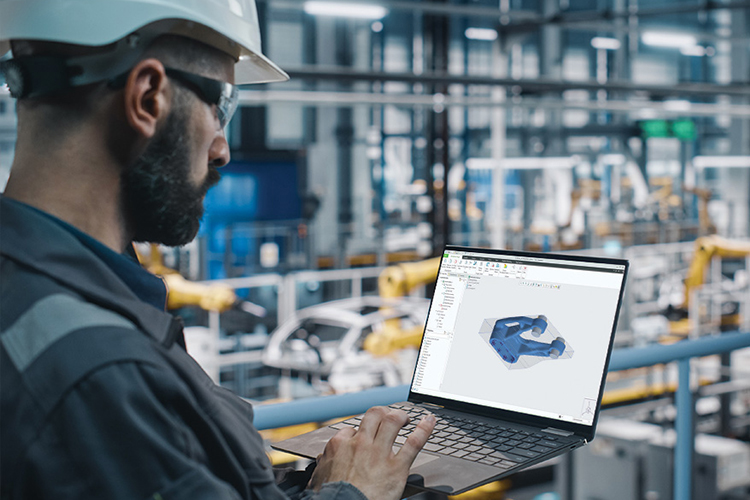
Trends with major industrial impact
This said, Johan Stahre pointed out a number of trends of great general societal and industrial impact, including:
1. Smart robots/human robots: They will take over more and more things – Tesla’s bot Optimus is an example
2. Electric cars: An actually 124-year-old trend that has gained a boost in recent years, although the rate of increase has slowed recently
3. The climate and environmental aspects: The big challenge is to quickly achieve a net-zero situation in industrial operations
4. Generative AI and new technologies: How quickly the new solutions come and are implemented varies, but generally, for example in Gartner’s oft-cited HypeCycle, a 5-10 year period is indicated before top-hyped technologies come into more general use
5. Increasing product complexity: Among other things, more software and more electronics will require more specialist skills, which today are often in short supply, and also related to the next point…
6. …demographic development: Which is to a great extent a key issue based on the trend that the number of active workers will decrease, while the elderly, who must be supported, increases.
The demographic problem – a ticking time bomb?
Johan Stahre dwelled on the demographics topic a little longer. In China, the problem will peak in 2035, while it happens earlier in Europe. “What is the significance for you as an entrepreneur,” Stahre wondered:
Here are some of the points that the Chalmers professor raised:
• Customers and potential employees are getting older. Spain and Italy in particular appear to be countries where, for reasons of demographic development, it looks tough to start new factories.
• Sweden, just like many other western countries, does not have a bright demographic future. We have, according to Stahre, ”a shortage of talent which, according to statistics, means that 77% of companies have difficulty filling certain key skills-related roles. In Finland, it looks better, where the corresponding figure is 59%.”
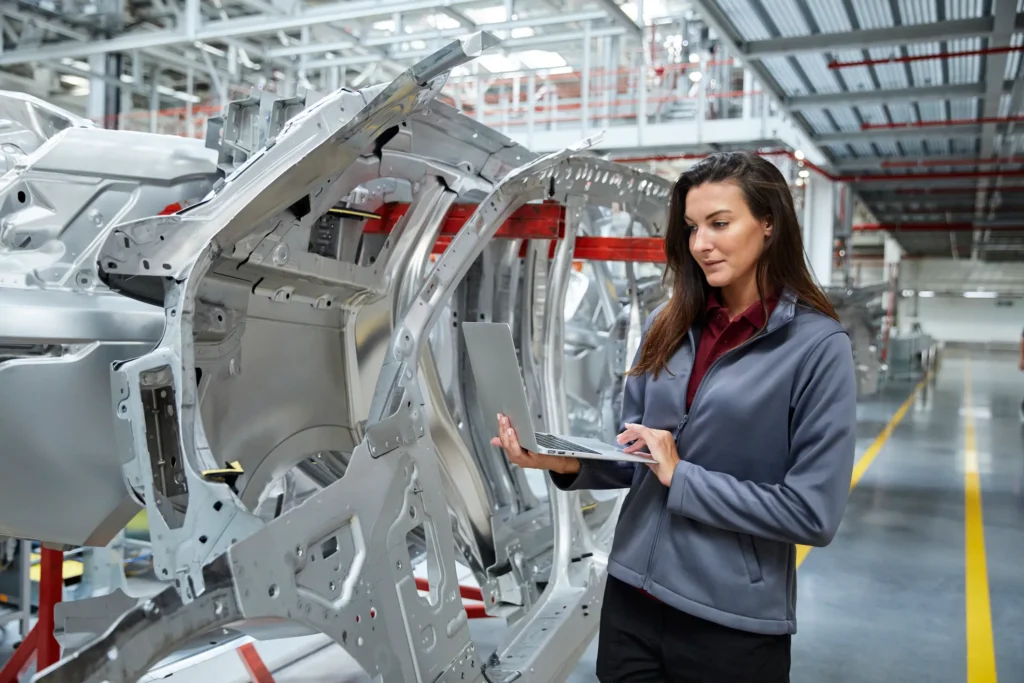
• A ”hidden” resource can be the gender factor. In short, we have a female under-representation in a range of industrial activities and technical professional roles. Within the manufacturing industry, it is estimated that 25% could be employed.
• What are the companies looking for in terms of skilled coworkers? Highest ranked here are AI and machine specialists, as well as sustainability experts.
• What can help people in industrial activities? Stahre points to AR technologies, Augmented Reality (AR/VR/XR) or generally cognitive enhancement techniques. Cobots, i.e. robots that can interact with humans without protective cages (Fenceless Automation). Exoskeletons for heavy or hazardous environments. Intelligent decision support.
There is of course more, but a generally important conclusion is the need for a massive increase in skills in the population.
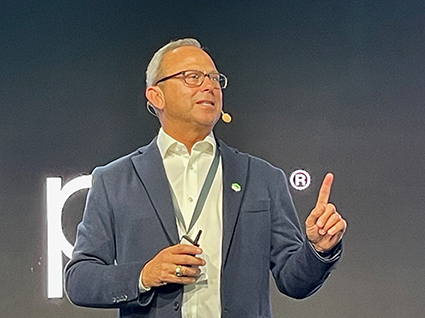
DiTullio’s list of challenges
So, some tough challenges await. With what can PLM systems contribute? Mike DiTullio, eloquently discussed around this on stage in Stockholm, under the heading: ”Transforming the Complexity of Product Lifecycle Processes.”
He began by going through the most important factors behind the pressures for change in the market. In a broad backdrop, he drew a picture that for example confirmed that the problem of integrating software development into product development work is one of the toughest issues. Not least in automotive.
“It really complicates development processes,” he said, adding: ”It’s not just about producing the software, but also about getting the hardware and software requirements together. In addition, the software has shorter life cycles, more releases, is updated more often and needs to be synchronized with the longer life cycles of the mechanical parts.”
He also pointed out that, ”much of what differentiates products on the market – not only in automotive but also in for example aerospace & defense, heavy machinery, medical technology, consumer products and high-tech electronics – is related to software and variant management. Which makes it a priority to solve.”

External market forces’ pressure for change
Alongside this, he listed the forces from the companies’ external markets that create pressure on the development work:
• PRODUCT COMPLEXITY – ”Things that complicate are that the products often need to be mass-personalized with individual customized variants, Made-to-Order and Configure-to-Order.”
• SUPPLY CHAIN VOLATILITY – “The sensitivity of global supply chains is shown by events such as the container ship stuck in the Suez Canal, the ravages of COVID, and the Huhti rebels’ attacks on shipping vessels off the coast of Yemen. These events were massive wake-up calls for a range of industries and demonstrated how fast and hard the effects reverberate through the distribution chains, with effects like difficult-to-manage product and spare parts shortages.”
• QUALITY, REGULATORY COMPLIANCE, and SUSTAINABILITY RESPONSIBILITY – ”It is crucial to live up to regulations, requirements, and to be able to correctly handle and execute on sustainability requirements and reporting. This is also linked to quality management. When it comes to sustainability, Sweden and the Nordic countries have long had a leading role globally, even if the rest of the world has now begun to act to close the gap in this area so crucial to the planet. Here anyway, the manufacturing industry should take advantage of the opportunities to become a leader, not least considering that the industry as such accounts for close to 50 percent of global energy consumption.”
• WORKFORCE DEVELOPMENT – “The Google generation tends not to document things – they search for the information or files required when they are needed. How do you connect this to the front line in the light of that today’s generation are ’digital natives’. No oily manuals like those that existed in the mid-1960s will work in this…and by all means do not forget that many of us in this room are competing for talent for our businesses, just as professor Stahre touched on in his speech.”
• AI EVERYWHERE – ”Today, the hype around AI is massive and everyone is looking for good strategies that can meet this trend, which is one of the biggest milestones of our time. What are the competitors doing? How do investors see it? How much can AI contribute to streamline operations and cut time to market, etc.?”
Summing up these market pressures, DiTullio’s conclusion is, ”We’re at a tipping point and the question is: are we in the right position to handle these and other effects of market pressure?”
The importance of agility and speed
As can be seen from Mike DiTullio’s list above, there’s a lot to consider when setting up or adapting a PLM system that can handle and meet the development and what needs to be done in an efficient way.
”That’s right,” he says, exposing a picture of PTC’s oft-used eternity symbol.
”In an ideal production world, most things work perfectly, but in the real world there is a lot of friction. It exists between siloed departments and process stakeholders. It emanate among other things from the fact that a lot of work is still done manually, with related sources of error. There are also difficulties in handling engineering changes and often a lack of standardized processes. Implementing new updated software versions too late are other frictions that can bring to the table worse competitive positions in several markets. What are the consequences of these frictions? Several, of course, but mostly it makes things slower, more expensive, and brings with it quality and regulatory compliance discrepancies,” DiTullio claimed.
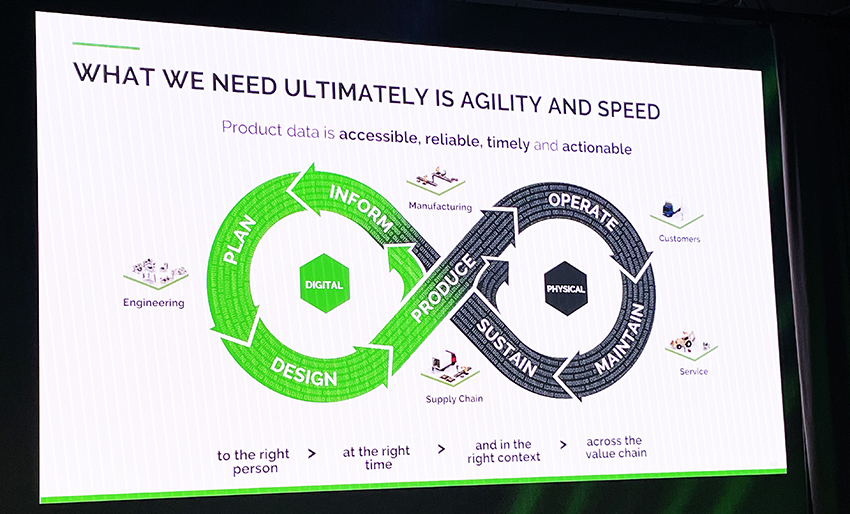
How do you meet this?
”What we ultimately need is a system that promotes agility and speed. At its ultimate level, product data needs to be fluid, accessible, reliable, time-relevant and actionable for the right person, at the right time and with the right content. With agility, you can actually face and fix all the frictions I talked about above.”
Hence, capturing agility is a heavy point of progress, but how is it defined?
As always, there are variations in the definition, but a generally held one is that agile means working in shorter cycles, equipped with the ability to constantly adapt to changing needs. In this people are still the most important building block. Those who work more ’traditionally’ may possibly find this type of iterative way of working difficult to adopt. But the values that come once the model has settled are hard to beat in terms of efficiency.
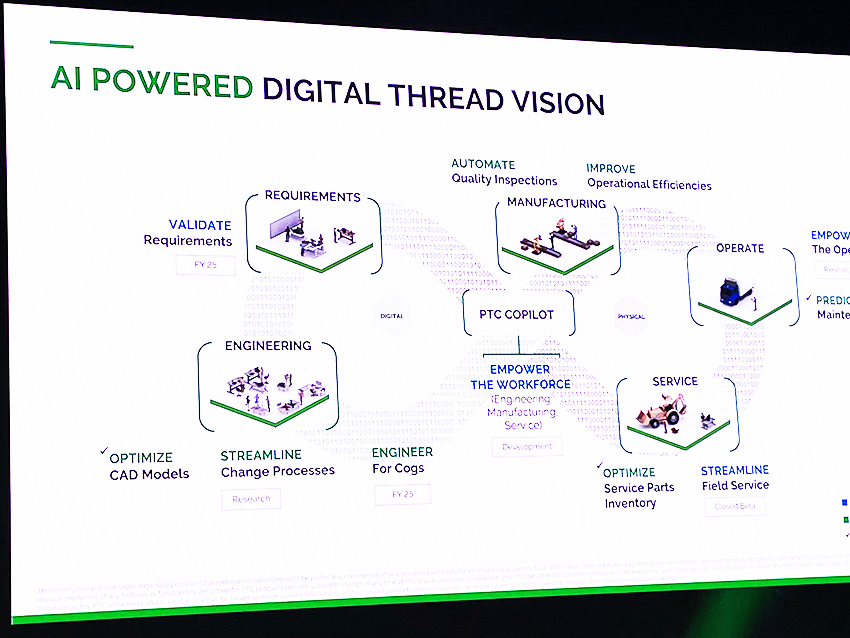
Agile and digital threads
The agile concept’s meaning goes back to the principles that were introduced in 2001 by a number of software developers. They wanted to create a more flexible way of working to be able to get products to market faster. They created The Agile Manifesto consisting of 12 principles for development work.
What are according to PTC the most important reasons to invest in agility? “It is the digital thread,” PTC’s COO said in Stockholm. This is how PTC and Mike DeTullio argue about this:
”A digital thread creates a closed loop between digital and physical worlds to optimize products, people, processes and places. This thread is in this an interconnected flow of relevant data that defines a product throughout its life cycle. It provides a comprehensive view of a product’s journey, from initial design and development to manufacturing, maintenance, service and retirement. It enables organizations to break down the pieces that DiTullio characterizes as ’frictions’: Silos, sluggish workflows and lack of interoperability between departments, functions and systems.”
“A digital thread,” asserts PTC’s COO, “ensures the quality and consistency of product-related data – keeping everyone updated and on the same page. Ultimately, it allows organizations to extract value from, or use, product data that was previously unavailable, underutilized or hidden to unlock business value and opportunity.”
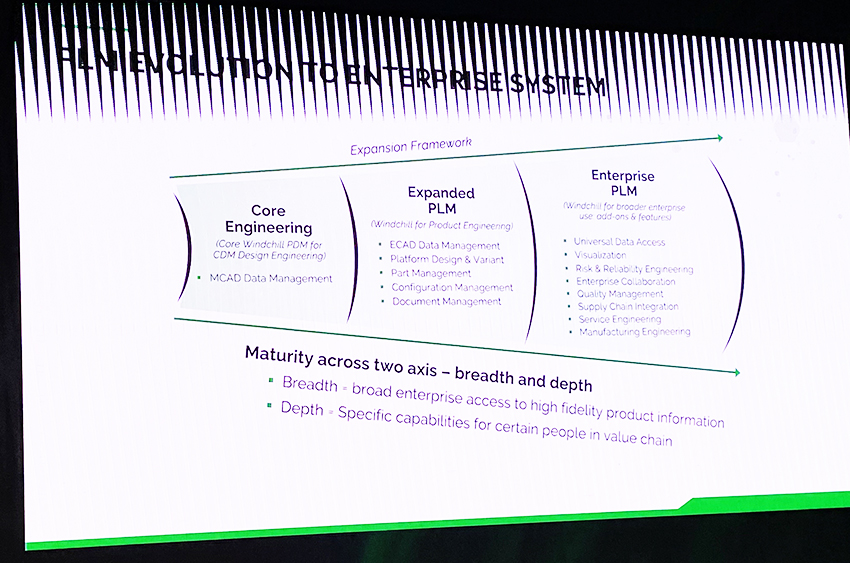
PLM’s renaissance moment
To achieve these and other product realization values, DiTullio talks about the evolution of the PLM journey over time within an expansive framework which, in PTC’s version, is about a journey between two axes of maturity, breadth and depth, in a widened, funnel-like movement forward. As shown on the graphics above – with PTC’s PDM/PLM suite Windchill as the digital tool and platform basis.
He further claims, ”PLM has finally reached the point where the concept can live up to the promises that have surrounded it for so long. The digital era we are in is PLM’s renaissance moment as an enterprise backbone system. But PLM also has and still is about a dynamic journey.” How? DiTullio explains the journey from a beginning where PLM was mostly about PDM and MCAD data management to today’s more full-blown and rich Windchill platform. Three steps apply:
• From Core Engineering work with PDM and MCAD Data Management, to…
• Expanded PLM, with a “Windchill for Product Engineering package,” bringing in things like added capabilities for ECAD, Design, Variant, Parts, Configuration and Document management, to next level’s…
• Enterprise PLM, where ”Windchill for broader enterprise” is completing the digital platform capabilities with add-ons and features such as Universal data access, Visualization, Risk & Reliability Engineering, Enterprise Collaboration, Quality Management, Supply Chain Integration, Service Engineering and Manufacturing Engineering.
The upper of the two axes in the framework expands with the breadth of the perspective with a growing scope and ever wider availability of high-quality product information. The lower axes, illustrates the expansion in terms of depth with specific capabilities for certain specialists in the value chain.

Can PTC deliver?
Can PTC deliver on the challenges that development is now rushing into? DiTullio is convinced of this:
”We believe that PLM is exactly the set of digital tools that can orchestrate these pieces. PLM systems are fundamentally designed to structure data and we can do this.”
In fact there are good reasons for Mike DiTullio’s stance on this. Here’s why: During its many years on the market, PTC has not only jumped on different development trends, but perhaps above all has often taken the not always comfortable position in creating and paving the way for new digital solutions, technologies, methodologies, and business models, above all within the framework of its PLM suite Windchill. In everything from parametric CAD (Pro/E), cloud CAD with build-in PDM (Onshape) to IoT/Industrial IoT (ThingWorx), Augmented Reality (Vuforia), connected solutions for service and parts management (Servigistics), Product-as-a-Service and pioneering efforts around the SaaS model, to name a few of the more prominent pieces, PTC has stood on the barricades. PLM innovation is part of the company’s DNA, and it looks like they intend to keep it there.
A coming article on The Volvo Group and Product-as-a-Service
In an upcoming article, PLM&EWRP News takes a closer look at another hyper-interesting issue where PTC has taken a leadership role: Product-as-a-Service. During a very interesting presentation during the CXO event in Stockholm, New Cores, with Anders Björk and Per Adamsson, were also present and discussed a Volvo Group case and the value of this concept.


